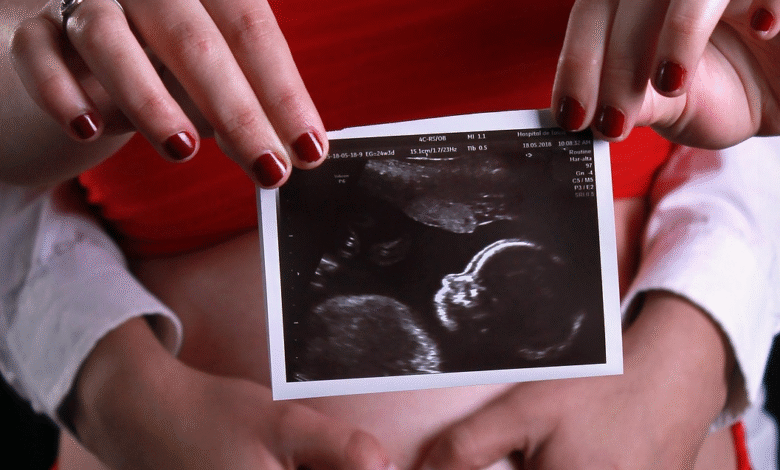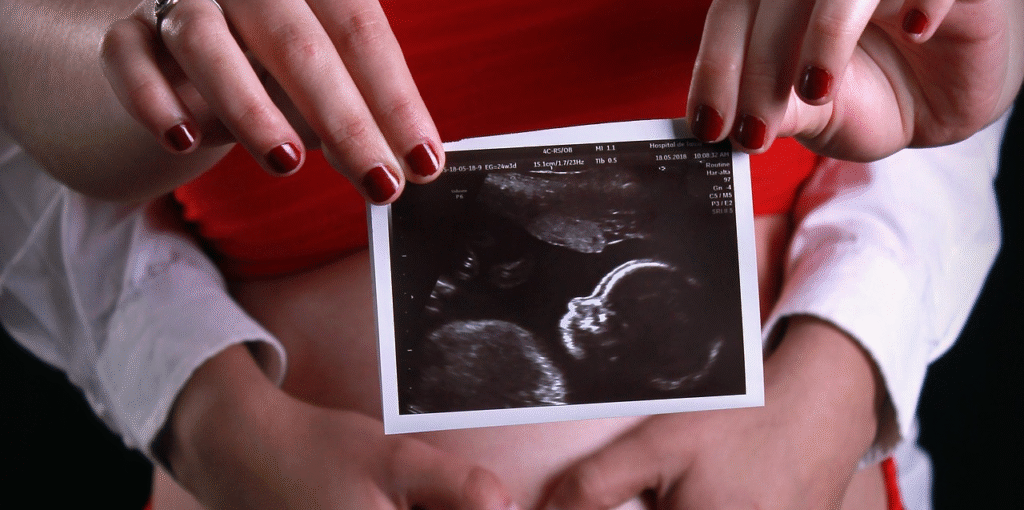

What exactly did doctors see during the ultrasound?
At a routine mid‑pregnancy scan in Kent, England, the technician noticed wispy strands on the fetal head—hair swaying like seaweed. The sonographer asked, “Is that hair?” and a hush fell over the room as techs and doctors peered in awe. This rare moment was captured on-screen and shared across social media, surprising parents and professionals alike.
Most doctors expect to see basic features like the heartbeat or spine during these scans, not clearly developed hair. Baby Ivy’s case was unique, showing strands far thicker than typical fetal fuzz, shocking everyone—even seasoned technicians.
Why can fetal hair show up on an ultrasound?
Fetal hair begins as lanugo—fine, soft down—starting around 16 weeks and most abundant by 28 weeks. Lanugo helps hold the baby’s protective coating, called vernix caseosa, and helps regulate body temperature in the womb.
While most lanugo sheds before birth, sometimes stronger, pigmented hair forms early. On an ultrasound, this hair can appear as bright streaks because the thick strands reflect the sound waves more than the baby’s skin. Ivy’s hair was so well-developed that doctors could see it clearly even at just 20 weeks.
When does fetal hair normally develop and disappear?
Fetal hair development follows a natural timeline:
- Growth usually begins around 14 to 20 weeks of pregnancy.
- By 28 to 32 weeks, lanugo covers most of the baby’s body.
- Around 32 to 36 weeks, this hair begins to shed. By birth, most of it is gone.
In some cases, full-term babies are still born with lanugo on their back, shoulders, or forehead. This is normal and usually goes away naturally after a few weeks.
Do ultrasounds predict how much hair a baby will have at birth?
Ultrasounds, especially the 2D types, are not always accurate at predicting the amount of hair a baby will have. Sometimes doctors may see white streaks on the scan that look like hair, but it doesn’t always mean the baby will be born with thick locks.
However, if a baby has very thick lanugo or early-growing hair, it can sometimes be seen, especially if the baby is in a good position during the scan and there’s plenty of amniotic fluid. Genetics and hormones also play a major role in how much hair a baby will be born with.
Who is baby Ivy?
Ivy was born full-term with a full head of thick, dark brown hair—just like what doctors saw during her 20-week scan. Nurses at the hospital were so amazed that they took photos with her. Her hair became her signature, and her story went viral after her mother shared it online.
Her mother, Emily Foster from Kent, was overwhelmed by the attention but happy to share the joy Ivy brought. Ivy continued to grow with even more hair, becoming a little internet celebrity, thanks to her unique look and unforgettable ultrasound moment.
Is it safe for a baby to have thick hair at birth?
Yes, it is completely safe. A baby being born with a lot of hair is just a natural trait. It doesn’t cause any problems. However, newborn hair is very soft and delicate, so it needs gentle care.
Parents should use mild baby shampoos, avoid rubbing the scalp too hard, and use soft baby brushes. It’s also important not to tie the hair too tightly or use clips that can hurt the baby’s scalp. Hair will continue to grow and change as the baby gets older.
What is the role of lanugo and vernix caseosa?
Lanugo and vernix caseosa are both natural and important for the baby’s health in the womb. Lanugo helps hold vernix on the baby’s skin. Vernix is a creamy white substance that protects the baby’s skin from drying out in the womb.
Together, lanugo and vernix protect the baby, keep the body warm, and make the delivery process smoother. Vernix also helps to prevent infections by acting like a barrier. These natural protections disappear soon after birth, but they play a big role during pregnancy.
Are there health concerns linked to lanugo?
In newborns, lanugo is perfectly normal and healthy. It usually goes away on its own within the first few weeks. However, if a baby still has lanugo for a long time or if it appears in older children, it could be a sign of other health conditions.
For example, some eating disorders and rare genetic conditions can cause lanugo in older children or adults. But in most newborns, there is no reason to worry. A pediatrician can help if there are any concerns.
How common is early prenatal hair visibility?
It is very rare for doctors to see clear signs of hair during a 20-week ultrasound. Most babies don’t develop thick enough hair at that stage. Even when babies have lanugo, it is usually too fine to show up clearly on the monitor.
Ivy’s case stands out because her hair was thick, dark, and visible much earlier than usual. These cases are not common, and they often surprise even experienced doctors and ultrasound technicians.
What makes Ivy’s story unique?
Ivy’s story shows how something simple—like a prenatal scan—can turn into a magical experience. It reminds us that pregnancy is full of surprises, and each baby develops in their own way. Ivy’s hair was not just a funny detail—it became a story that spread happiness around the world.
Many parents now look at their scans with more curiosity and excitement. Her story has inspired people to see beauty in unexpected places and to cherish every moment during pregnancy.
FAQs
1. Can ultrasounds reliably show fetal hair?
Not always. Only thick or dense hair will show up clearly, and it depends on the baby’s position and how much fluid is around them. Most fetal hair is not visible until later in pregnancy.
2. How long until lanugo disappears?
Lanugo usually starts shedding around 32 weeks and is mostly gone by birth. If it remains at birth, it usually falls off naturally within the first few weeks.
3. Can early ultrasound hair predict a full head of hair at birth?
No. Some babies show hair on ultrasound but are born with little or none. Others may show no signs and be born with lots of hair. It depends on the baby and their genes.
4. Is lanugo hair the same as adult hair?
No. Lanugo is soft and thin, while adult hair is thicker. Lanugo gets replaced by other types of hair after birth and is not permanent.
5. Should parents worry about long hair in newborns?
No. It’s not a problem. As long as the baby is healthy and the hair doesn’t cause any issues, it’s completely normal. If hair growth seems unusual as the baby grows, a pediatrician can help.




